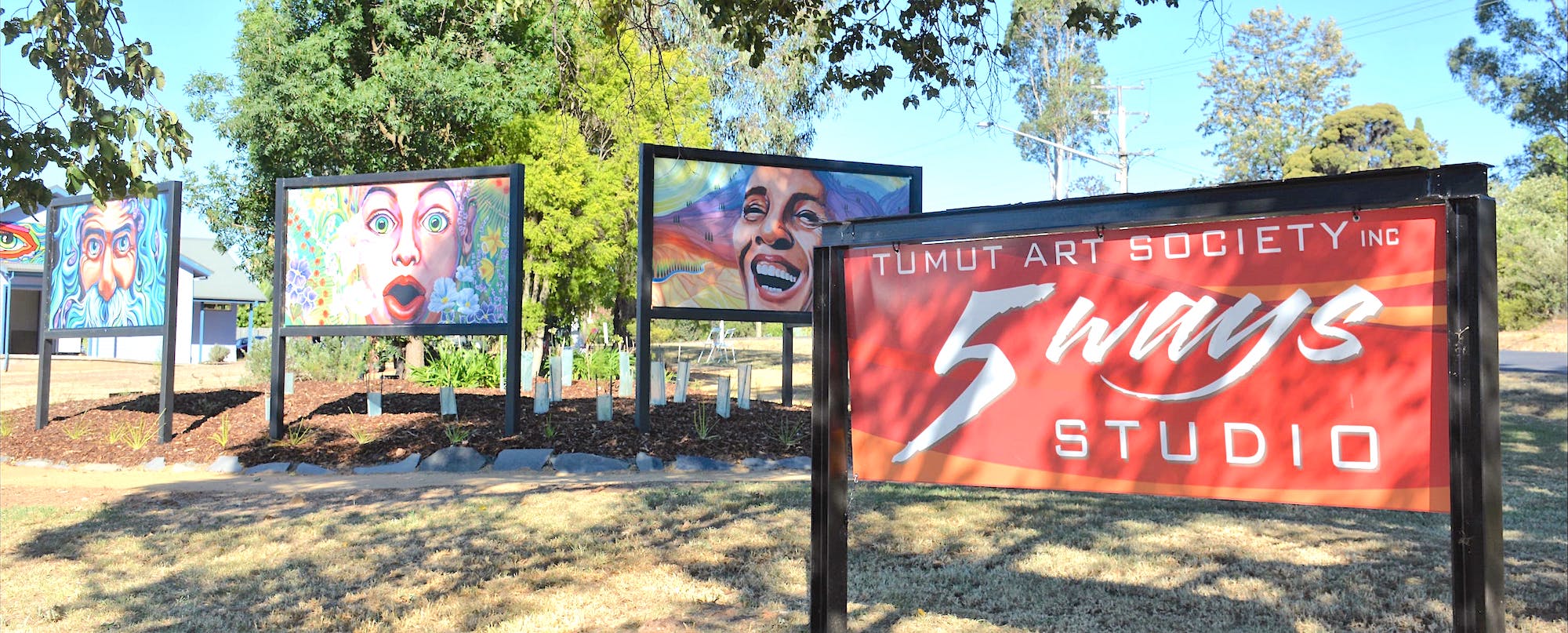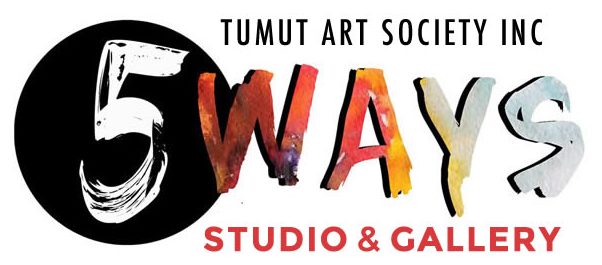
About Tumut Art Society
It all started when a small and enthusiastic group of “art lovers” began painting with encouragement from Lyle Baker and others. They set up their easels wherever they were able to find space – they used a back room of a service station, private homes, and often packing their lunches and going out painting for the day.
In 1962, the inaugural meeting of the Tumut Art Society was held and for a number of years the Society used temporary accommodation. Lyle Baker was always on the lookout for permanent premises and to establish a community cultural centre. Membership was growing rapidly. When land with a small quaint cottage at the 5Ways came on the market in 1970, Lyle Baker purchased the property on behalf of the Society and, in time, the Society paid him back the money he used to buy the cottage and land. The little cottage was made suitable by members and friends for a studio. It was the pride of the Society. However, a growing membership and lack of space presented some problems. Sadly the cottage was burnt down by vandals in 1998.
The first Art Show was held in 1957, and has been running every year since (except in 1968 when no venue was available, and 2020 because of the COVID-19 pandemic). The Tumut Art Society has been very fortunate in being able to procure some very high profile judges for the Annual Art Shows.
In 1973, the Tumut Art Society purchased a Snowy Mountains Authority building from Talbingo and transported it to 5 Ways – a new studio was now in place. Notable persons and politicians visited the Tumut Art Society, including Prime Minister Gough Whitlam. In 1978, another building was purchased from Blowering. The Tumut Football Club bought half the building, the other half was butted on to the first building. In 1979, the building was opened by Premier Neville Wran. Later, with a Cultural Grant from the government, a storeroom was added to the building.
The stunning beauty of Tumut and surrounding area inspires artists from all over Australia to make regular pilgrimages to the area where they immerse area themselves in painting the local scenery. Many of these artworks end up in the Tumut Art Show as well as exhibited nationally and internationally. The Tumut Art Society has a very good collection of paintings, mostly donated by visiting artists conducting workshops, some signed by world renowned artists.
About the Annual Tumut Art Show
The Annual Art Show is one of the longest running art exhibitions in regional NSW. The Annual Art Show has evolved over the years, is well known in the arts community and attracts accomplished artists from all over Australia.
The first Art Show was organised by the Tumut Rotary Festival Committee and was opened in one building and then moved to another building across the street for the duration of the festival. Notable people at the exhibition were Dame Pattie Menzies, Sir William Hudson and William Dargie.
In 1974, the Annual Art Show was first held in the RSL carpark and continued for 25 years.
In 1999, the NSW Ministry for the Arts awarded the Tumut Art Society a grant of $25,000. This was matched with $25,000 from the Blakeney Millar Foundation and enabled an extension of the 5Ways Studio to accommodate Exhibitions, especially the Annual Art Exhibition as the RSL car park was no longer suitable.
In 2000, the Annual Art Show was held in the new Tumut Art Society Lyle Baker Gallery and 5Ways Studio and Gallery for the first time and has continues to be held in this space today.
Tumut Art Society thanks the Snowy Valleys Council, the NSW Government, the Federal Governments, local businesses and community members for the ongoing support which enables us to provide a vibrant program of events, classes and workshops and our Annual Art Show which has become known as one of the best in regional Australia.
The success of the Annual Art Show can also be attributed to the passion, tenacity, and commitment of the founders and members.
